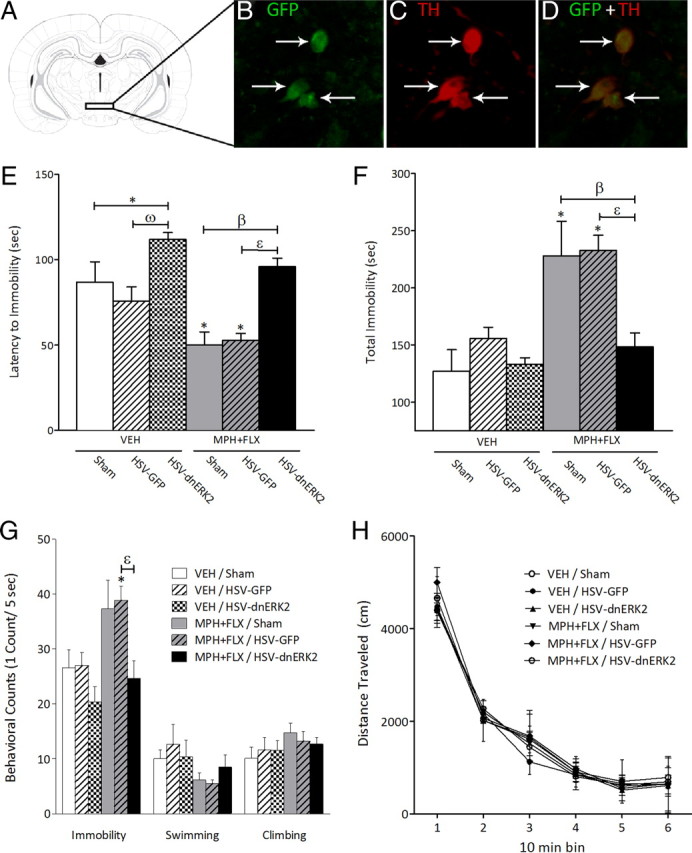Figure 9.

Viral-mediated blockade of ERK2 in the rat VTA regulates behavioral responses to forced-swim stress. A, Region of VTA to which microinjections of HSV vectors were targeted (Paxinos and Watson, 1997). B, Cells expressing dnERK2 (green, cyanine 2) fluorescence. C, Cells expressing TH (red, cyanine 3) fluorescence. D, Merged image of B and C showing dual-labeled neurons in the VTA (magnification, 400×; ∼5 mm caudal to bregma). The arrows indicate labeled cells. VEH-pretreated rats receiving microinjections of HSV-dnERK2 in the VTA demonstrated higher latency to immobility (p < 0.05) (E), without affecting total immobility (F), or forced-swimming behavioral counts (G) when compared with VEH-pretreated/sham controls (p > 0.05, respectively). MPH + FLX-pretreated rats receiving sham surgery or HSV-GFP had decreased latency to immobility (E), with increased total immobility (F) and immobility counts (G, left panel) when compared with the VEH-pretreated/sham and VEH-pretreated/HSV-GFP controls (p < 0.05, respectively). MPH + FLX-pretreated rats receiving HSV-dnERK2 did not differ in any of the dependent variables when compared with the VEH-pretreated/sham controls (p > 0.05; n = 6–10 per group). H, Distance traveled in the open field 24 h after day 1 of forced swimming was not affected by viral surgery or by MPH + FLX pretreatment when compared with VEH-pretreated/sham controls. *Significantly different from the VEH-pretreated/sham controls (p < 0.05). ωSignificantly different from the VEH-pretreated/HSV-GFP controls (p < 0.05). βSignificantly different from MPH + FLX-pretreated/sham (p < 0.05). εSignificantly different from MPH + FLX-pretreated/HSV-GFP (p < 0.05). Data are presented as latencies to become immobile and total immobility (in seconds), as cumulative 5 s intervals of immobility, swimming, and climbing counts, and as distance traveled in centimeters (mean ± SEM).
